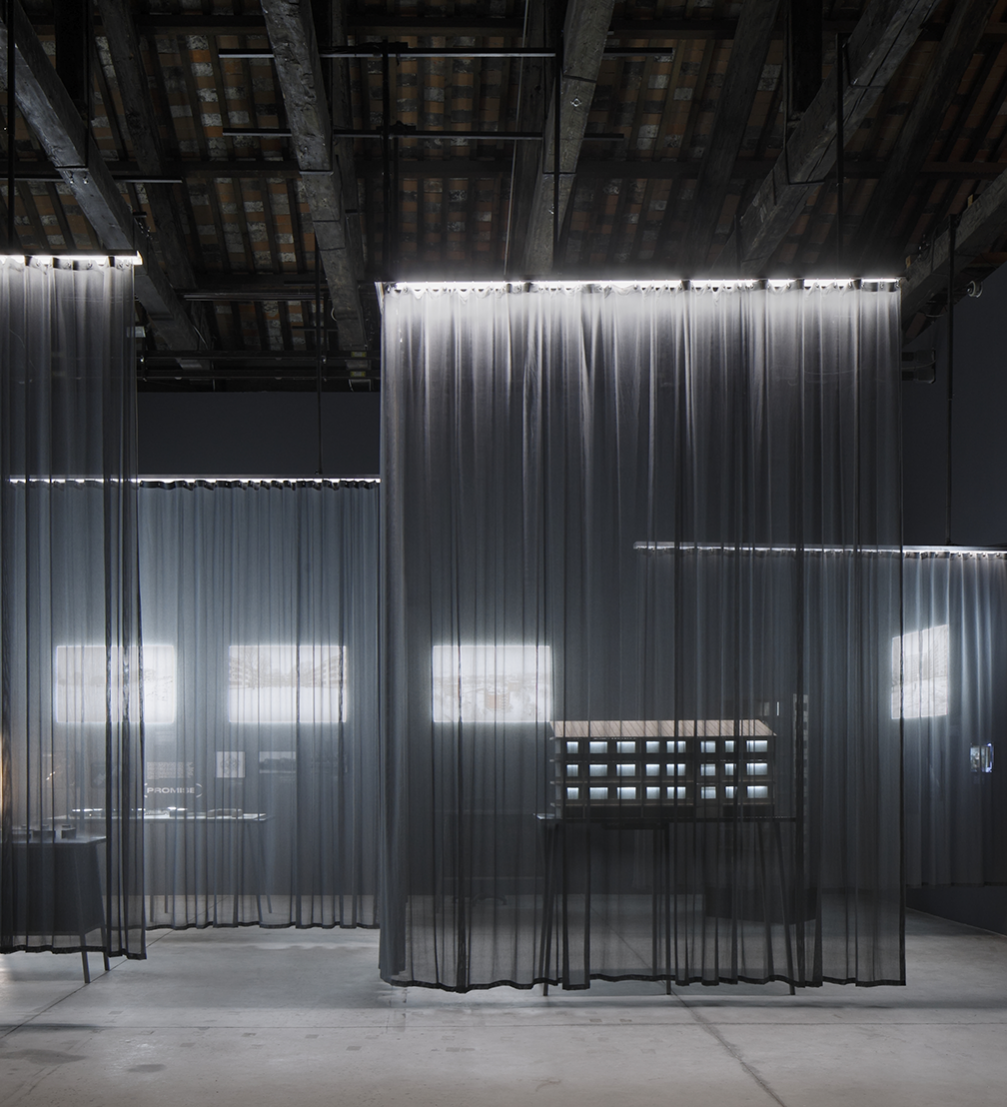
The preparations are complete for the official inauguration of the Latvian Pavilion «Together and Apart» at Biennale Architettura 2018. The opening will take place on Friday, May 25 at 12.30, at the Arsenale Artiglierie. The exhibition is accompanied by a newly published book on the architecture of apartment buildings.
Friday morning, the curatorial team of the Latvian pavilion — architect and urbanist Evelīna Ozola, architect Matīss Groskaufmanis, scenographer Anda Skrējāne and the director of the New Theatre Institute of Latvia Gundega Laiviņa — will introduce the Pavilion to media representatives and invited guests. Minister of Culture of the Republic of Latvia Dace Melbārde, Commissioner of the Latvian Pavilion Jānis Dripe, Latvian Ambassador in Italy Artis Bērtulis, Minister of Culture of the Republic of Estonia Indrek Saar, and Minister of Culture of the Republic of Lithuania Liana Ruokytė–Jonsson will also participate in the opening of the exhibition. The Pavilion will be open to visitors from May 26 until November 25.
Although Latvia is one of the most sparsely populated areas in Europe, notably, two–thirds of its population live in apartments, which is the highest ratio in Europe. Centred on apartment buildings, the exhibition highlights the ambiguity between being an architectural, but also a social, political, economic, and an ecological project.
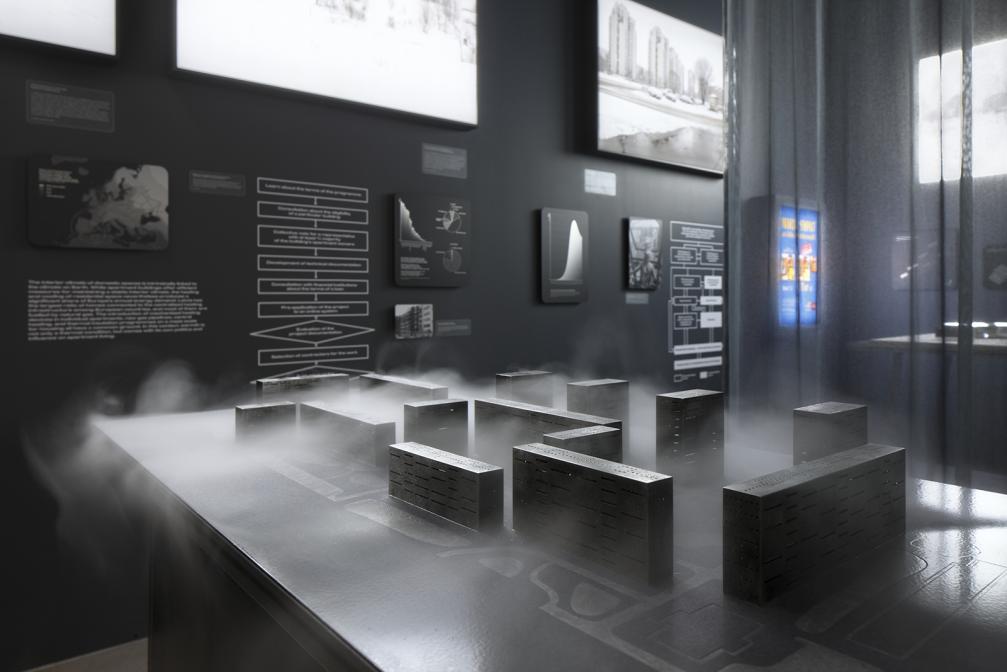
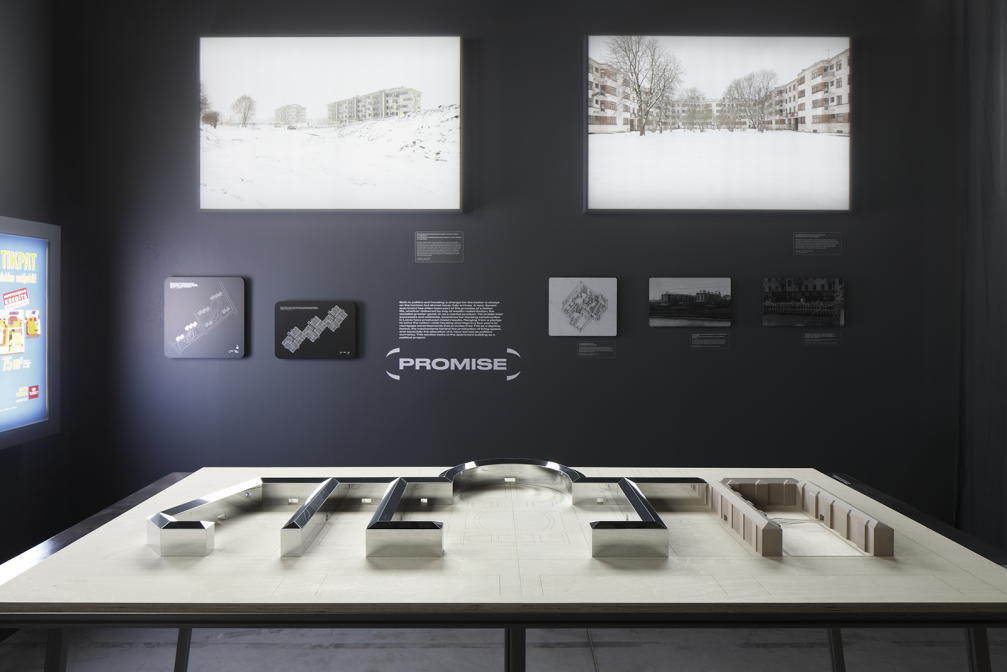
«We address this year’s theme «Freespace» by focusing on the everyday choreography of life that provides a regular contact point between the general public and architecture. In Latvia, it’s quite clear that this place is within apartment buildings. That is the everyday meeting place — it’s where most people live, see, and feel architecture,» says curator Anda Skrējāne.
The official opening of the Latvian Pavilion will also serve as the launch for an accompanying publication «The Architecture of Together and Apart: An Inquiry into Apartment Buildings». The book encapsulates and extends the content of the exhibition, and includes essays written by a diverse range of authors. Among them, architecture theorist Robert Alexander Gorny suggests a relational approach to understanding how apartment buildings came about as a specific form of residential architecture. Academic and artist Renata Tyszczuk notes how the domestic sphere is playing an increasingly bigger part in the politics of global climate. Also — economist Pēteris Strautiņš outlines the relationship between the free market and the experience of being a homeowner, while political scientist Ivars Ījabs describes how apartment buildings can function as cost–effective instruments of governance. Among the contributions, the book also includes an excerpt from Peter Sloterdijk’s «Sphären III» («Spheres III»), that dissects the relationship of the individual apartment and the modern self. The 200–page volume is punctuated with fragments of photo series by Reinis Hofmanis and Ieva Raudsepa, portraying life in apartment buildings, both from a distant and a close–up perspective. It also features illustrations by Sander Ettema, Ludo Groen, Mārtiņš Ostaņēvičs, Marta Prikule. The book is available at the biennale official bookstores in Venice and soon — also on the homepage of «Together and Apart».
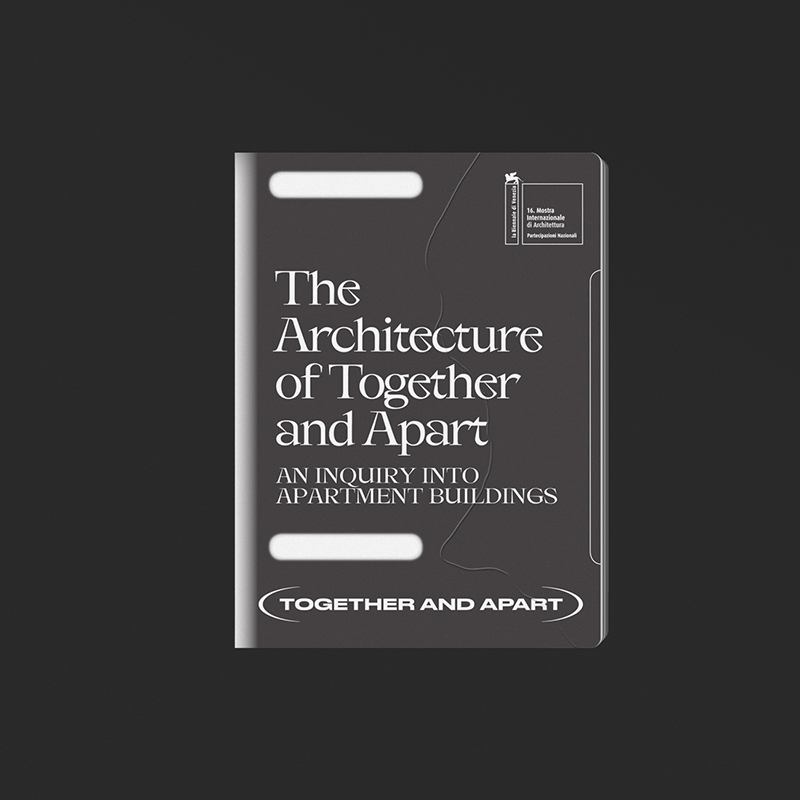
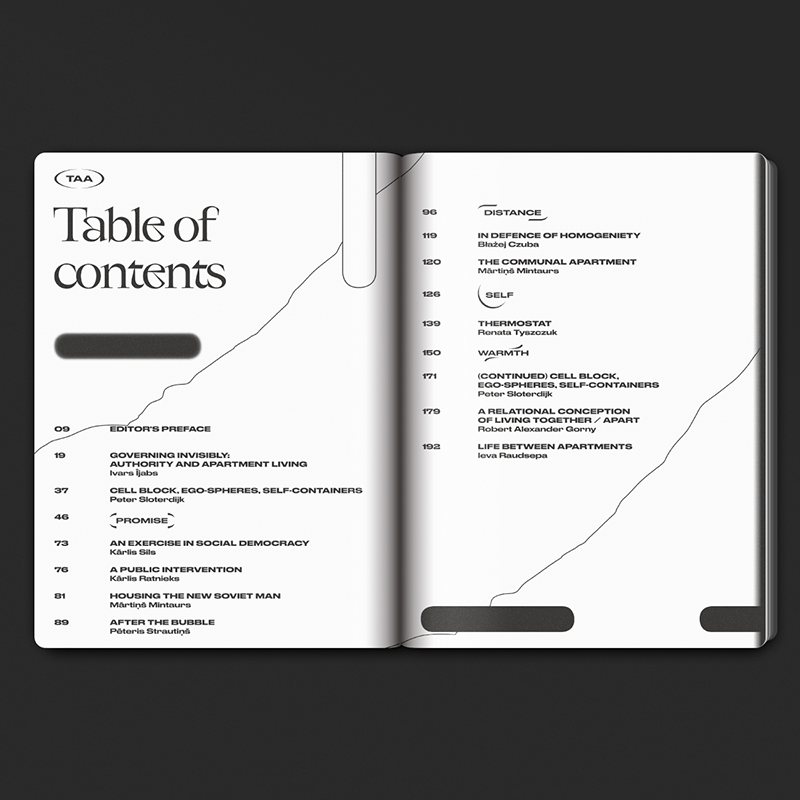
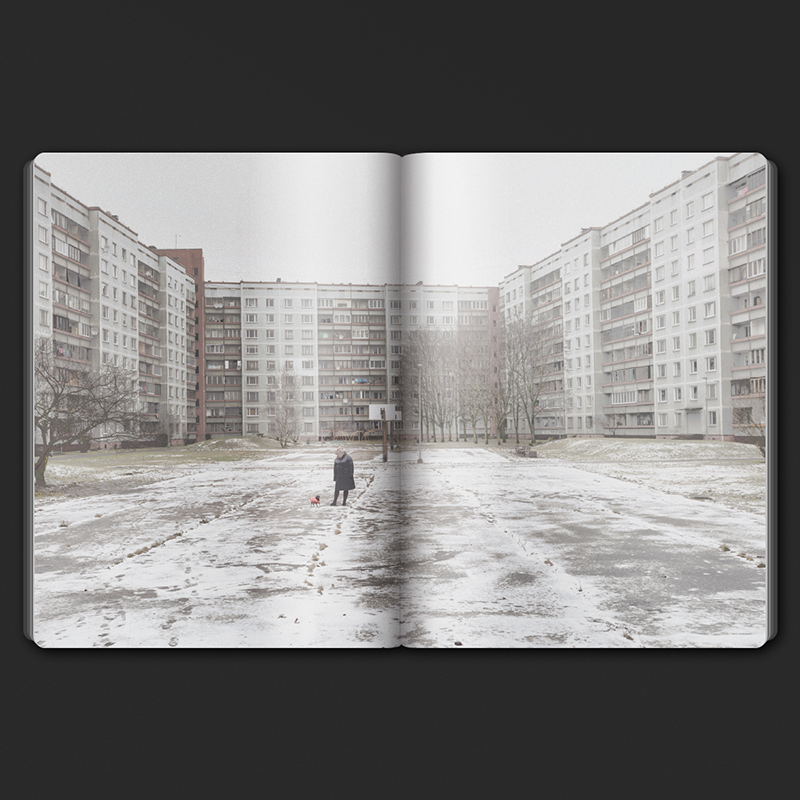
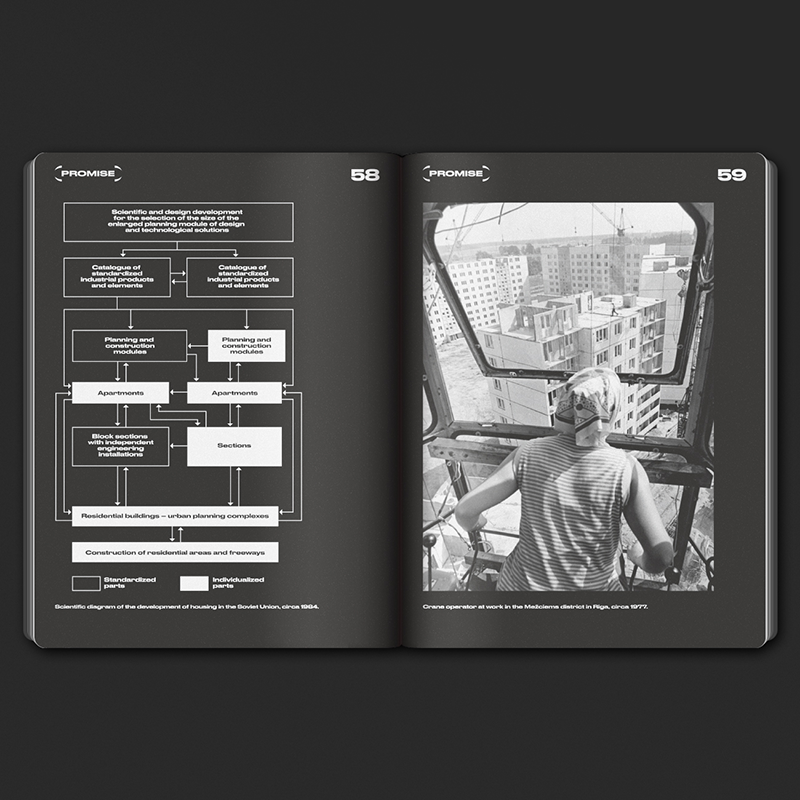
During the opening, the curatorial team will introduce the layout and the concept of the exhibition, which is divided into four sections — Distance, Promise, Warmth, and Self, each looking at a socioeconomic transformation through the lens of an apartment building. These sections will be presented through large–scale conceptual models, created by sculptor Ivars Drulle, artist Daria Melnikova, set designer Charlotte Spichalsky, designer Dita Pāne and architect Mārtiņš Dušelis. Each in its own way, the models seek to capture architecture’s relationship to apartment living and broader societal processes. The exhibition also features archival materials that illustrate significant episodes from both the far and the more recent history of apartment living, as well as a photography series by Reinis Hofmanis, depicting the multitude of apartment buildings found in Latvia’s urban and rural landscapes.
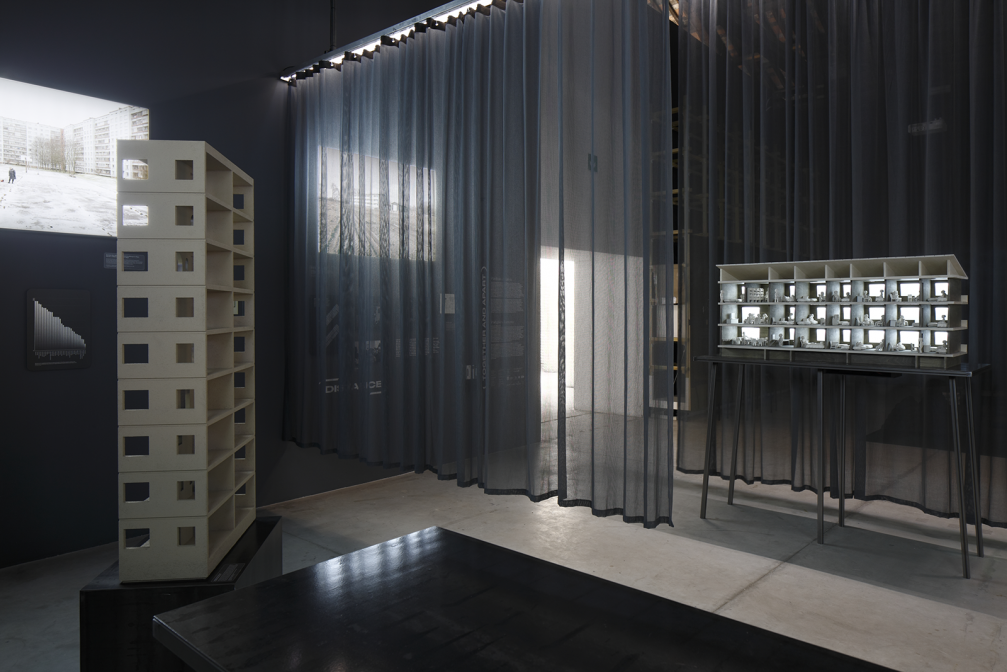
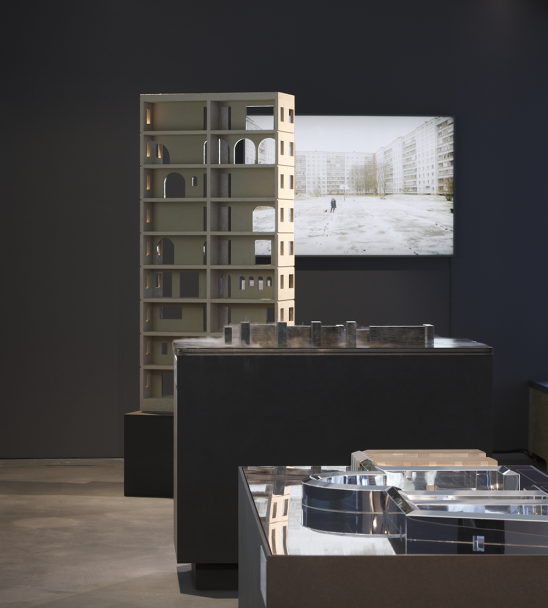
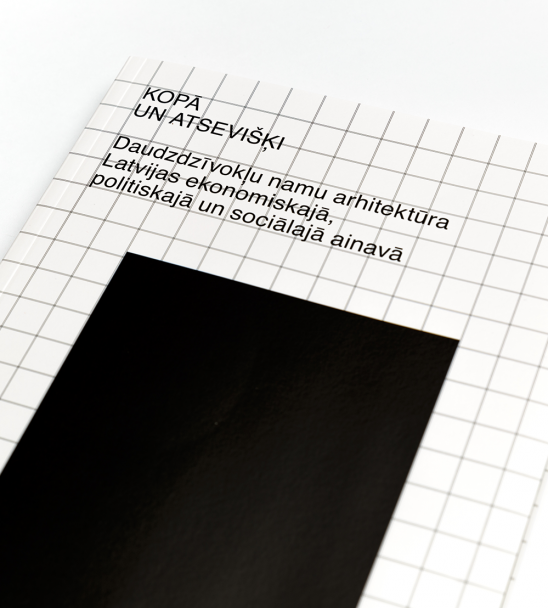
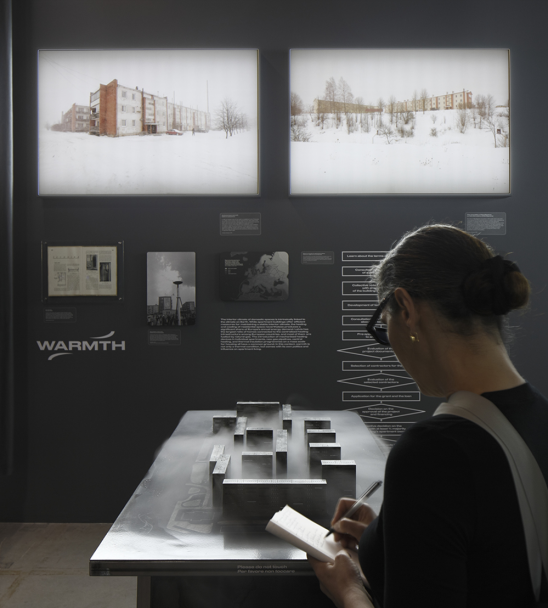
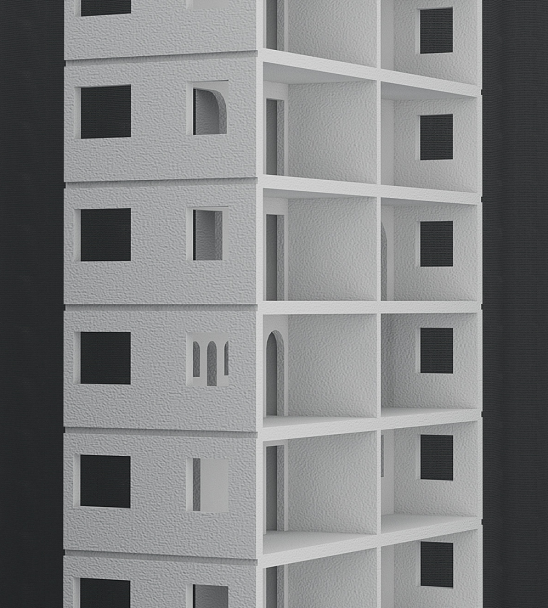
Viedokļi